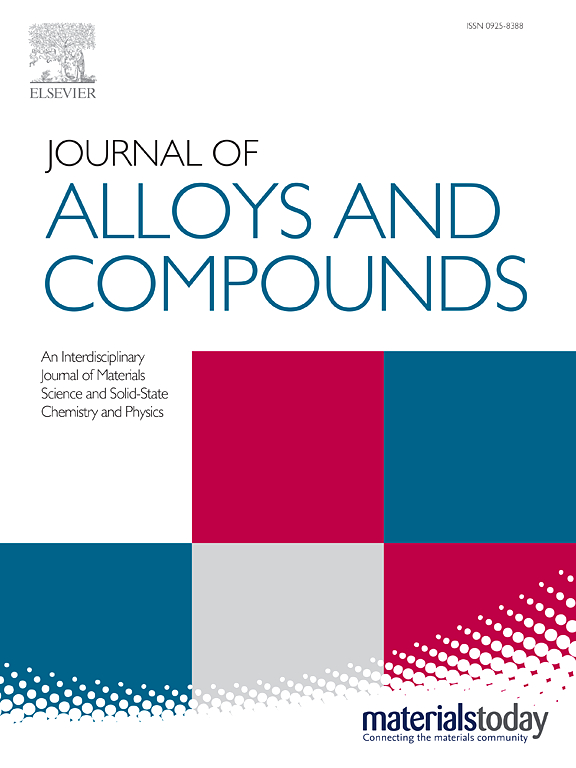Microstructure and magnetic properties of CoCrCuFeNiTi high entropy alloy coatings based on plasma surface alloying technology
IF 5.8
2区 材料科学
Q2 CHEMISTRY, PHYSICAL
引用次数: 0
Abstract
The present study explored the correlation between microstructure and magnetic properties of CoCrCuFeNiTi HEA coatings prepared on Si substrate using plasma surface alloying technology. The coatings exhibited a mixture of Fe2Ti, FeCr, FCC, BCC phase and the amorphous/crystalline structure. The mircrostructure changed with the deposition duration, resulting in different coercivity. The crystalline part of the coating deposited for 1.0 h contained up to 81.9% of Fe2Ti and more amorphous structure, causing a coercivity of 53.1 Oe. Fe2Ti showed a preferred orientation along the (201) direction, leading to columnar structure in the coatings and the vertical growth of columnar structure caused an increase in coating thickness. As the deposition duration increased to 1.5 h, a reduction of Fe2Ti and amorphous structure, as well as an increase of defects such as grain boundaries allowed the coercivity to increase to 104.5 Oe. FCC, FeCr, and BCC phase increased as increase of deposition duration, and the relative content of BCC phase increased to a maximum of 8.3% at a deposition duration of 2.0 h. An increase of grain size and nonuniform distribution of different phases in coating led to a reduction of coercivity to 82.9 Oe. However, the vertical growth of the columnar structure made the coating to exhibit obvious shape anisotropy and the coercivity increased to 118.3 Oe when deposition duration was 3.0 h. The coercivity of HEA coating prepared by plasma surface alloying technology were sensitive to microstructure, and the deposition duration needed to be controlled to obtain the desired coercivity.求助全文
约1分钟内获得全文
求助全文
来源期刊

Journal of Alloys and Compounds
工程技术-材料科学:综合
CiteScore
11.10
自引率
14.50%
发文量
5146
审稿时长
67 days
期刊介绍:
The Journal of Alloys and Compounds is intended to serve as an international medium for the publication of work on solid materials comprising compounds as well as alloys. Its great strength lies in the diversity of discipline which it encompasses, drawing together results from materials science, solid-state chemistry and physics.
 求助内容:
求助内容: 应助结果提醒方式:
应助结果提醒方式:


